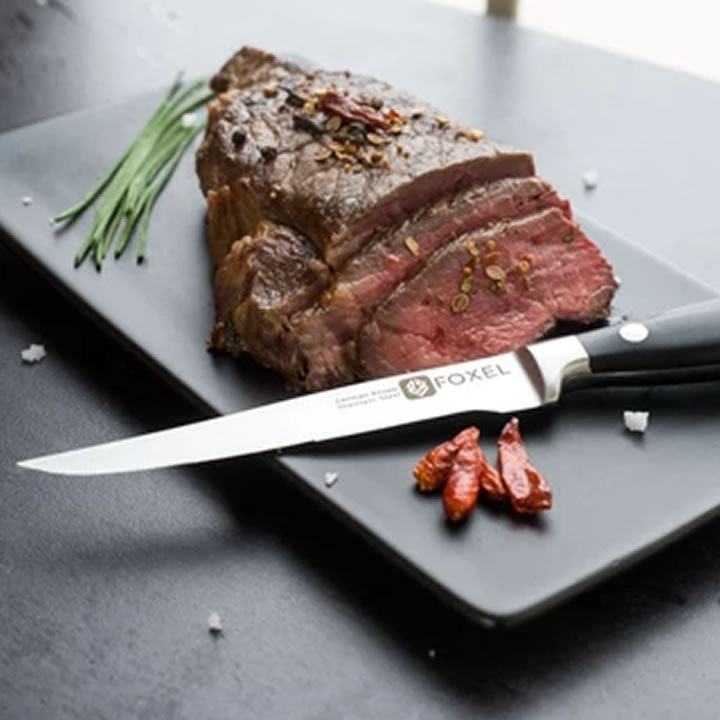Of all the meat dishes, steak is one of the most popular choices for meat lovers. When people think about meat dishes, steak is the first picture that pops up in their minds.
It’s cooked by either grilling or pan-frying the meat and finishing it off in the oven. It’s cooked in a degree of doneness that ranges from rare, medium rare, medium, medium-well, and well done.
Whatever manner a person desires, the steak is the king of the meat dishes. Steak lovers know how satisfying it is to slice into that thick and juicy meat.
Unfortunately, a dull steak knife can ruin the whole experience and make it frustrating. It can tear apart the meat instead of slicing it precisely and cleanly.
Sharpening the steak knife periodically, or as needed, is crucial to prevent this unfortunate experience.
Steps to Sharpen a Steak Knife
Dull non serrated steak knives can ruin a perfectly cooked steak. Furthermore, this could pose a hazard to the user since it would require them to use more force to cut the steak. After several uses, the dinner plates on which steaks are served make the knives slightly dull.
Here are some quick steps to sharpen non serrated steak knives:
Select A Sharpening Tool
Steak knives need to be re-sharpened or honed from time to time. Most homes and kitchens depend on sharpening tools to maintain the sharpness of the knives. There are three general types of tools to select from:
- Whetstones are square or rectangular sharpening stones. They last a lifetime and cost very little. You may have to spend a bit more time sharpening a knife with this tool, however.
- Sharpening Rods may be a misnomer as you can’t sharpen a dull knife with this tool. They are best used for honing a slightly dull knife. Several styles or cuts are available. You may select from the regular, the abrasive-coated, the combination (rough and smooth sides), and the ceramic cuts.
- Roller-Type Sharpeners use abrasive discs to sharpen and hone the edges of the knife. The most common example is the slotted electric knife sharpener. There are manual and portable roller sharpeners as well. These knife sharpeners offer speed and convenience in making sure your steak knives will cut the steaks clean and smooth.
Gather All The Supplies
Prepare a clutter-free work area. Your sink counter or a tabletop will do. Cover the work area with a newspaper, which will also collect tiny metal particles. Keep a dry and soft cloth at hand. If using a whetstone, you will need some water or oil. Some owners keep their whetstones submerged in water and only take them out when in use.
Sharpening The Non-Serrated Steak Knives
A whetstone may sharpen even a very dull steak knife. It has a rough surface for sharpening. The other surface is smooth and is used for honing the knife. Slide the edge of the knife from the tip towards the handle at 15 to 20 degrees with light pressure. Do this several times until you see a shine on the edge. Whetstones should be kept moist with oil or water.
Position the end of the sharpening rod firmly against the surface of the working area. Slide the edge of the steak knife against the rod. Start from the area near the knife’s handle and pull the blade towards you. Do this around 10 times then repeat with the other side of the knife’s blade.
With electric sharpeners, you slide the knife on a slot. Start from the base and pull the knife towards you. Grinding wheels turn the moment you insert the knife into a slot. This tool does the job fastest.
Test The Sharpness Of The Steak Knives
If your knife can cut smoothly across a piece of paper, or slice an onion cleanly when using just a light pressure, your knife is sharp.
Keeping your non serrated steak knives sharp will help you greatly enjoy your favorite meat dish. Choose a great tool and invest some time in keeping them sharp.

